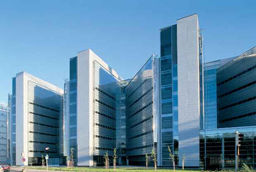What is a Digital Video Recorder DVR?
DVR is a familiar term for those connected to the field of storing digital data. But for those who are new to the technology, the first question which pops up on hearing the term is what is a DVR?
A DVR stands for Digital Video Recording, which is a digital medium of storing high quality data, which is retrievable. Digital Video Recorders are data storing devices, constituting a federation of hardware and software. They are used to provide services that present programming information and have the ability to encode varying data streams derived from a single or multiple input devices. When compared to the conventionally used devices like Video cassette recorders and tape recorders, a DVR converts the data into MPEG-1 or MPEG-2 formats and stores it on a hard disk.
DVRs have touched numerous fields which includes television, surveillance and monitoring, motion pictures and logistics to name a few. One such area where DVR technology has gained popularity along with wide acceptance is surveillance and monitoring.
Digital Video Recorder based security surveillance systems are used for monitoring home and business environments, where security and safety of movable and immovable property along with living beings, gains prominence. With the help of a computer, this technology allows an administrator to constantly monitor a particular area from a remote location. Adding to this technology, is the support shown by the DVR surveillance system for internet, where a person sees live images of his or her geographically separated home or office environments.
With this DVR technology, the surveillance related videos can be stored for months or for years, if they are properly secured and stored. So, the need for video tapes, which are more susceptible to damages and data loss after a period of time, gets eliminated.
DVR surveillance system components include motion sensors, multiplexer, image zooming controls, color quad processor, security surveillance camera connection and DVR surveillance software, which makes the management of DVRs easy.
Types of Surveillance Digital Video Recorders
DVRs are faster and easier to manage than their non-digital or analog system friends. Nowadays, with the inclusion of High definition technology, HD dvr recorders have gained much prominence in the surveillance field. Moreover, when compared with a traditional tape recording, a DVR has much storage capacity. It can record on its hard drive, data which is equivalent to 35 VCR tapes. However, this storage recording volume can differ, as per the hard disk drive capacity of storage.
Well, coming back to DVRs, they are two types of security surveillance digital video recorders, which are:
- PC based DVR
- Standalone DVR
PC based Digital Video Recorder is a platform, which has a video recording feature embedded in a computer. It can be of two forms which are Tower mount and Rack Mount. The components of a PC based DVR are motherboard, network card, CPU, hard disk, and memory. With the help of the DVR video card and DVR software, the user gets the remote access of the surveillance system. In this arrangement, the video from the security camera gets directly recorded to the DVR capture board. Then the software of DVR works in sync with the DVR board and manages to change the video images which are captured, into recognized format and simultaneously offers features such as camera controls, recording and playback feature and other configurable traits.
Standalone Digital Video Recorder is an all-in one unit, where all components are designed and aligned on a single circuit board and it is like a DVD player, which is highly reliable and is simple to use and install.
Well, there is no immense difference between these two, as both work in capturing videos related to security surveillance. But the PC based DVR has advanced features and is a multi tasking unit and is ideal for expansion.
The matter of difference in Standalone DVR vs. PC DVR lies in its working. Large scale users like corporate banks, and airports rely on a PC based system, as per their needs. If the company is relatively small and doesn’t depend on sophisticated controls, of surveillance equipment, then a standalone digital video recorder is enough. If more sophistication like viewing, playback, video file saving through internet, viewing surveillance videos on mobile are needed, then a PC based DVR is a minimum necessity.
Ultimately, what ever is the type of deployment, the final goal is to secure the data in a flexible way and making its availability abundant.
DVR Surveillance Software
Digital video recorders are the combination of hardware and the software embedded in a single device and it makes the whole system work for the surveillance needs. Till now, we have discussed a bit about DVRs on a common platform and now, we will be discussing about their software and its related notes. It is a fact that, DVR surveillance software is also useful in making the whole system work with ease. At the same time, one cannot blindly go through the advertisement and shop for a DVR software.
It is better to know about the purpose of the software, before going for it. While setting up a DVR surveillance system for a home or a business, one needs software, which is equipped with security features as well. It is a fact that DVR software is more advanced than usual video recording software and so, one need to go for the one, which has the best features in it. Some of the features, which have to be present are:
- With DVR software, the user selectable image capture rate is possible on all input basis or on selective input basis. The capture rate may be programmed in such a way that, it can be configured as per the event or on a necessary alarm.
- The software must offer the user, a flexibility to configure image resolution and must also automatically adjust the image resolution as per the user demands.
- In order to allow the videos transferable on internet, on a faster note a H.264 hardware compression is necessary for gaining high quality of video.
- Features such as motion detection, direction of motion detection are necessary in DVR software for security surveillance.
- Routing the videos based on user inputs in an automated way is also essential feature.
- Event search, time and date stamping will also make DVR surveillance software best in class.
- Video archival must also be supported by the DVR software for surveillance activities.
With the internet, the flexibility to select DVR surveillance software, based on reviews on websites and online magazines can be done with ease. Firstly, applications which are supported by the DVR software needs to be notified, while selecting DVR software. With certain screenshot samples provided in reviews, one can easily benefit in zeroing upon DVR surveillance software, ideal for the user need.
Benefits of DVRs
As there is remarkable improvement in the technology of digital video recording, the management of these surveillance related devices has become simple and noteworthy.
- The inclusion of motion sensor feature, where the recording takes place, only when there is movement, saves a lot of storage space.
- Another feature of switching the surveillance cameras from sleep mode to working mode saves power consumption and thus saves some operational costs, to the enterprise, which deploy it.
- In DVR systems, every motion recording can be separated with an image in common formats like JPG. This makes the recognition of faces or movements easier.
- There is a sequential retrieval feature as well, where the recordings are made as per the date and time. To understand better, let us take an example. Suppose there is a robbery in store, which has been equipped with surveillance system. If the robbery took place in between 10pm -11pm, then there is no need for the store owner to go through all the entire days’ video capture. He can just login and inquire the video captured in the required timeframe and the DVR administration software will provide the clippings recorded in the specified timeframe, from the hard disk. This is practically possible, as each video is stored in segments and so the retrieval of video is per time and date.
However, the availability of these highlighting features depends upon the model of the DVR which is deployed. It is a fact that all DVR systems are not available with common functions and it depends on the price of the DVR & its software invested by the enterprise.
DNF Security
DNF Security is a subsidiary of Dynamic Network Factory headquartered in the heart of Sillicon Valley, CA.
©2020 Dynamic Network Factory
Follow us


